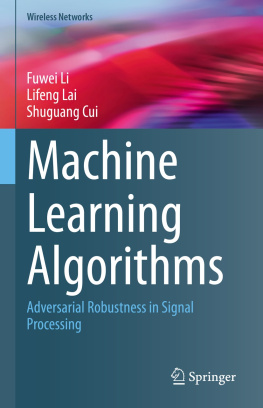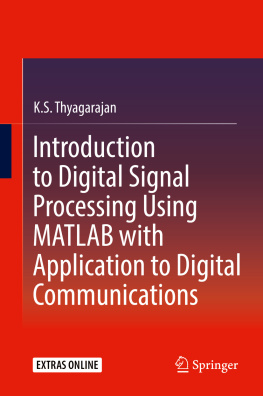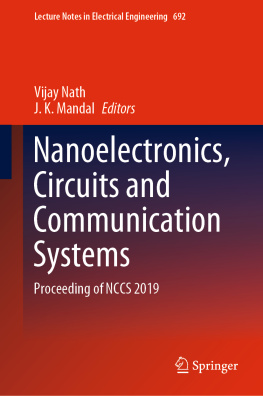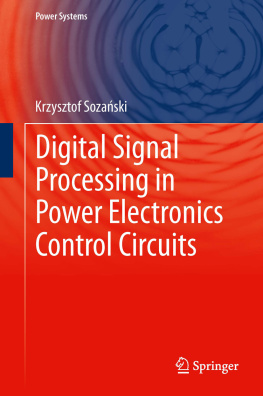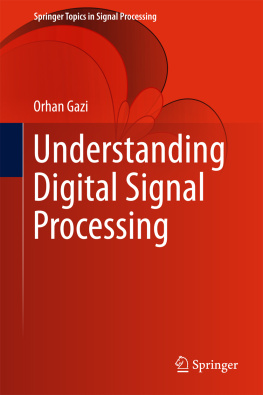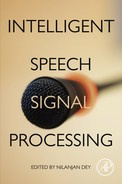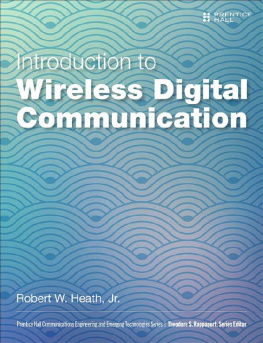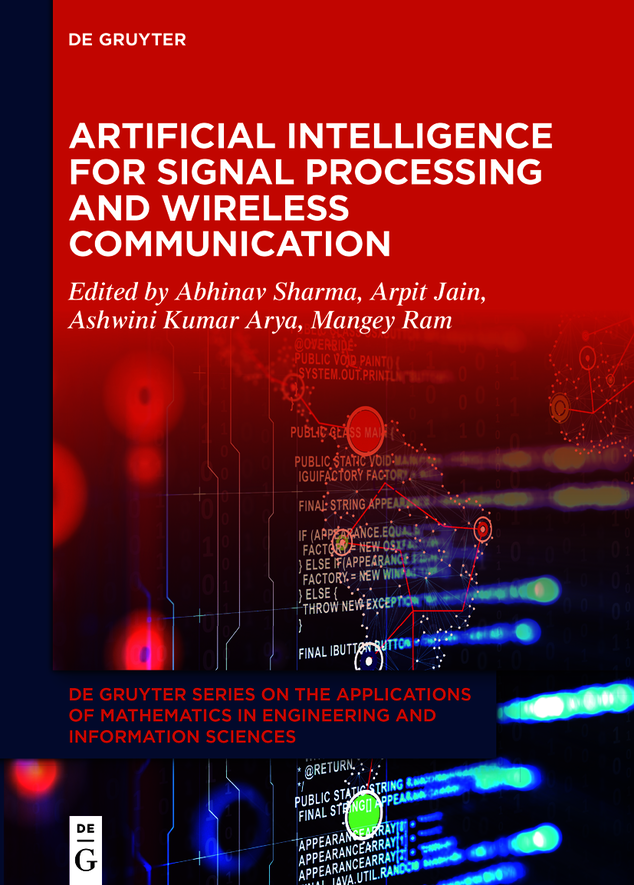De Gruyter Series on the Applications of Mathematics in Engineering and Information Sciences
Edited by
Mangey Ram
Volume
ISBN 9783110738827
e-ISBN (PDF) 9783110734652
e-ISBN (EPUB) 9783110734720
Bibliographic information published by the Deutsche Nationalbibliothek
The Deutsche Nationalbibliothek lists this publication in the Deutsche Nationalbibliografie; detailed bibliographic data are available on the Internet at http://dnb.dnb.de.
2022 Walter de Gruyter GmbH, Berlin/Boston
Editors biographies

Dr. Abhinav Sharma is working as an assistant professor (senior scale) in the Department of Electrical and Electronics Engineering in the University of Petroleum and Energy Studies, Dehradun, India. He received his B.Tech. from H. N. B. Garhwal University, Srinagar, India, in 2009, and M.Tech. and Ph.D. from Govind Ballabh Pant University of Agriculture and Technology, Pantnagar, India, in2011 and 2016. He has taught subjects such as data communication networks, microprocessor and embedded system, artificial intelligence and machine learning, and communication systems. He has publications in IEEE, Taylor & Francis, Elsevier, Springer, Emerald, and many other national and international journals and conferences. His field of interest includes adaptive array signal processing, artificial intelligence and machine learning, and metaheuristic algorithms and smart antennas.

Dr. Arpit Jain is currently working as senior curriculum leader in WhiteHat Education Technology Pvt. Ltd., India. A seasoned academician having 11+ years of experience in university-level teaching in the field of electronics, control engineering, and machine learning, worked as assistant professor for 10 years at UPES India, a part of Global University System (GUS), the Netherlands. He has rich experience in curriculum design and has designed the curriculum for data analytics, and machine learning specializations. The areas of his research interests include real-time control system, fuzzy logic, machine learning, and neural networks. He has published research articles in SCI/Scopus indexed journals, edited books with IEEE, Emerald, RIVER, CRC, and many other reputed publishing houses. He received his B.Eng. from SVITS, Indore, in 2007, M.Eng. from Thapar University, Patiala, in 2009, and Ph.D. from UPES, India, in 2018.

Dr. Ashwini Kumar Arya is currently working as a research professor at the Institute for Wearable Convergence Electronics (IWCE), Department of Electronic Engineering in Kyung Hee University, South Korea. He received his B.E. from GBPEC Pauri Garhwal, India, in 2005 and M.Tech. from GBPUAT Pantnagar, India, in 2007, and Ph.D. from IIT Roorkee, India, in 2013, all with the major of electronics and communication engineering. He has rich experience in teaching and research, and served in various universities in India and abroad. He has published various research articles in SCI/Scopus indexed journals and conferences. His research focuses on the applications of RF engineering and EM theory in wireless communication and antenna designing technologies for various applications.

Prof. Dr. Mangey Ram received his Ph.D. major in mathematics and minor in computer science from G. B. Pant University of Agriculture and Technology, Pantnagar, India. He has been a faculty member for around 12 years and has taught several core courses in pure and applied mathematics at undergraduate, postgraduate, and doctorate levels. He is currently a research professor at Graphic Era (Deemed to be University), Dehradun, India. Before joining the Graphic Era, he was a deputy manager (probationary officer) with Syndicate Bank for a short period. He is editor in chief of International Journal of Mathematical, Engineering and Management Sciences and Journal of Reliability and Statistical Studies; editor in chief of six book series with Elsevier, CRC Press A Taylor and Francis Group, Walter De Gruyter (Germany), and River Publisher; and the guest editor and member of the editorial board of various journals. He has published 225+ research publications (journal articles/books/book chapters/conference articles) in IEEE, Taylor & Francis, Springer, Elsevier, Emerald, World Scientific, and many other national and international journals and conferences. Also, he has published more than 50 books (authored/edited) with international publishers like Elsevier, Springer Nature, CRC Press A Taylor and Francis Group, Walter De Gruyter (Germany), and River Publisher. His fields of research are reliability theory and applied mathematics. He is a senior member of the IEEE, senior life member of Operational Research Society of India, Society for Reliability Engineering, Quality and Operations Management in India, and Indian Society of Industrial and Applied Mathematics. He has been a member of the organizing committee of a number of international and national conferences, seminars, and workshops. He has been conferred with Young Scientist Award by the Uttarakhand State Council for Science and Technology, Dehradun, in 2009. He has been awarded the Best Faculty Award in 2011, Research Excellence Award in 2015, and recently Outstanding Researcher Award in 2018 for his significant contribution in academics and research at Graphic Era (Deemed to be University), Dehradun, India.
Long short-term memory (LSTM) deep neural networks for sentiment classification
Bharatendra Rai
University of Massachusetts , Dartmouth , USA
Acknowledgments: This work was carried out using Dells Mobile Data Science Workstation Precision 7750 with NVIDIA Quadro RTX 5000. The author would like to thank Dell and Nvidia for loaning his powerful laptop to support his deep learning and artificial intelligencerelated research.
Abstract
Recurrent neural networks (RNNs) are useful for text data classification problems. However, when a sequence of words in text data has long-term dependencies, RNNs suffer from vanishing gradient problem that makes network training difficult for long sequence of words or integers. Long short-term memory (LSTM) neural networks are a special type of RNNs that help overcome this problem and make them possible to capture long-term dependencies between keywords or integers in a sequence that are separated by a large distance. This chapter provides an application example and illustrates steps for using LSTM deep neural network for movie review sentiment classification. The steps include text data preparation, creating LSTM model, training the model, and then assessing the model performance.
Keywords: RNN, LSTM, deep neural network, sentiment classification,
Introduction
Deep learning models using a wide variety of neural networks have been used in different types of applications involving classification and prediction []. Long short-term memory (LSTM) deep learning neural networks are a special type of recurrent neural networks (RNNs) that are useful with data involving sequences and provide certain advantages. Text data is one of the examples of data involving sequences. One of the key advantages of using LSTM networks lies in the fact that it addresses vanishing gradient problem that makes network training difficult for long sequence of words or integers. Gradients are used for updating RNN parameters and for long sequence of words or integers, and these gradients become smaller and smaller to the extent that effectively no network training can take place.


